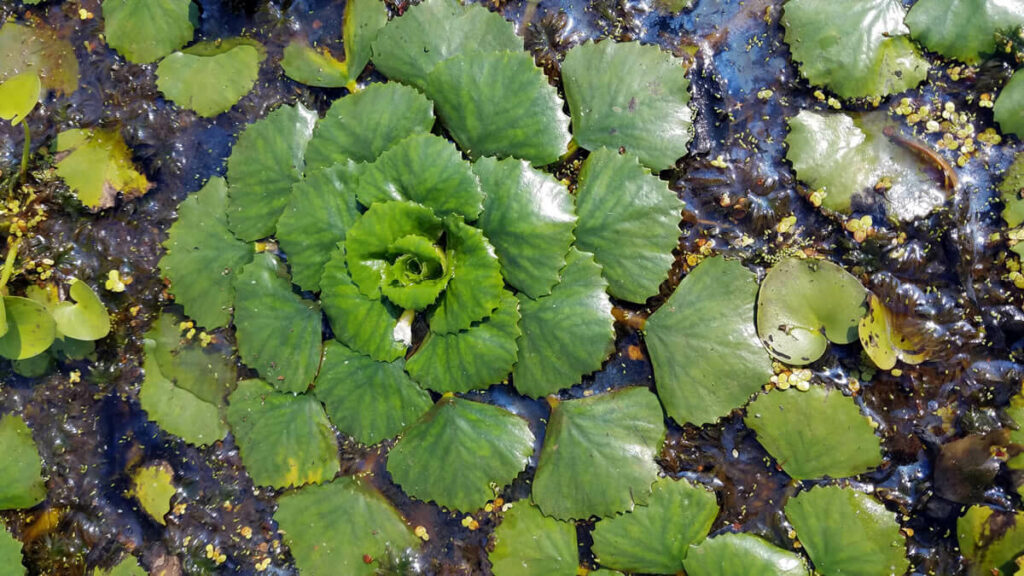New Jersey DEP Fish and Wildlife is preparing for a large-scale restoration project at the Paulinskill River WMA, located in Hampton and Andover Townships, Sussex County. The project falls within the Hyper Humus section of the WMA, formerly a peat and humus mining operation belonging to Scotts-Hyponex.
Ducks Unlimited is funding the effort to control invasive Phragmites and water chestnut (Trapa natans) within the Hyper Humus ponds. Water chestnut is an aquatic plant that forms dense floating mats which outcompete native plant communities. Its decay can deplete oxygen levels, leading to fish kills.
In addition to hand-pulling water chestnut plants, the herbicide Rodeo (active ingredient glyphosate) has been applied to water chestnut infestations at Hyper Humus ponds over the past several years. While a systemic herbicide would be more effective in killing viable seeds and other aquatic invasive plants such as Eurasian watermilfoil, Rodeo is the herbicide of choice as it provides for no activity once applied to water and therefore has no effect on non-target species, including rare and endangered aquatic plants which might be found at Hyper Humus.

Phragmites is an aggressive wetland grass that outcompetes native plants and may displace native wildlife. In August of 2019, a motorized amphibious vehicle will be used to apply an aquatic-approved glyphosate-based product to Phragmites. This same application was also completed in August of 2018. Application of the herbicide at this time of year minimizes impacts on nesting and migrating birds that use the area.
The Nature Conservancy is overseeing a large restoration project that intends to dechannelize the Paulinskill River, restore a variety of natural habitats, and improve recreational opportunities. Baseline soil, hydrology, botanical, and biological sampling have been completed. TNC contracted the Louis Berger Group to develop three conceptual design plans based on the findings from field sampling, input from local stakeholders, and the mission of Fish and Wildlife. Three core stakeholder meetings and two public meetings were held to solicit input during the design process and converge on a preferred concept. The concept will now be advanced to 30% design so that a permit plan set is available to seek funding sources for construction of the project.
February 2019 Public Stakeholder Presentation (pdf, 4.9mb)
Design Concept (pdf, 2.2mb)
For more information, please contact Melissa Woerner at Melissa.Woerner@dep.nj.gov.
 Official Site of The State of New Jersey
Official Site of The State of New Jersey
